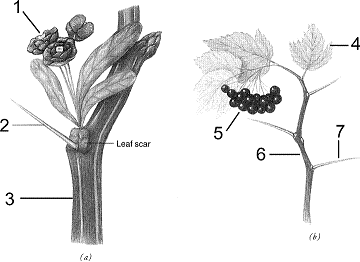Which of the following correctly pairs two homoplastic features from Figure 18-1?

a. 1 and 4
b. 2 and 7
c. 3 and 6
d. 2 and 4
e. 1 and 5
B
You might also like to view...
Why do flatworms move away from light sources?
A. to avoid skin cancer B. to avoid the mutagenic effects of direct sunlight C. to hide from predators D. their prey are always found in dark environments
The part of the brain that controls the basic responses necessary to maintain life processes (breathing,
heartbeat) is the a. medulla oblongata. b. corpus callosum. c. fissure of Rolando. d. cerebellum. e. cerebral cortex.
DNA fingerprinting utilizes
a. SNPs. b. lipoplexes. c. prions. d. tandem repeats. e. "suicide tags."
At the blood donation facility, you are completing an information form. The form asks about your health history and includes a question about whether you have ever had malaria or visited a country where malaria is endemic. Why is this information relevant?
A. Recipients differ in their susceptibility to malaria; if you have had malaria, the staff will earmark your blood to specific kinds of recipients. B. If you are infected with malaria, you are probably also infected with HIV, and that would disqualify your donation. C. Malarial parasites can persist in the liver, and, as a result, could be contaminating your blood and transferred to a recipient. D. This is just one of many pathogens that blood is screened for. The information given by the donor saves the staff time in testing the blood.